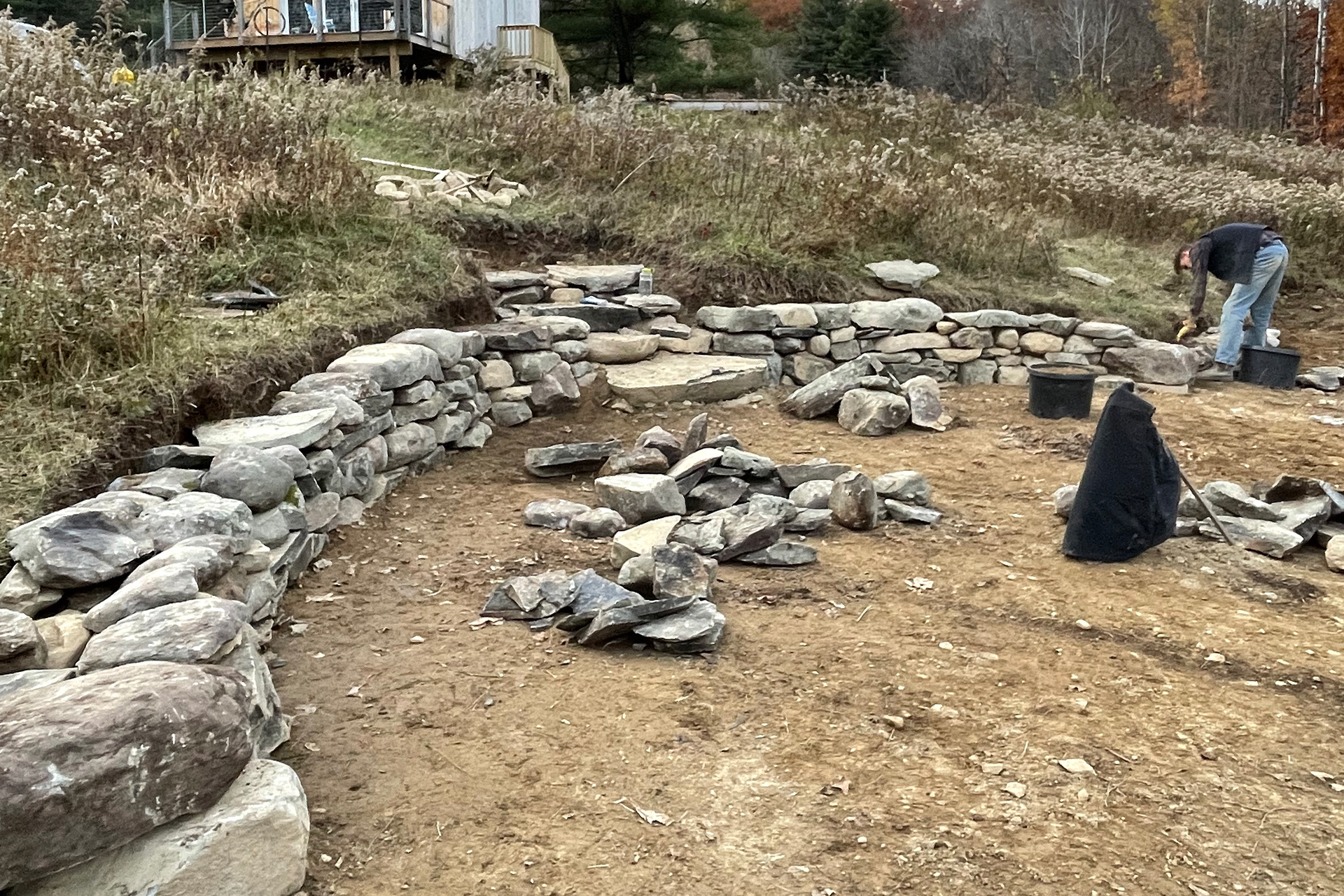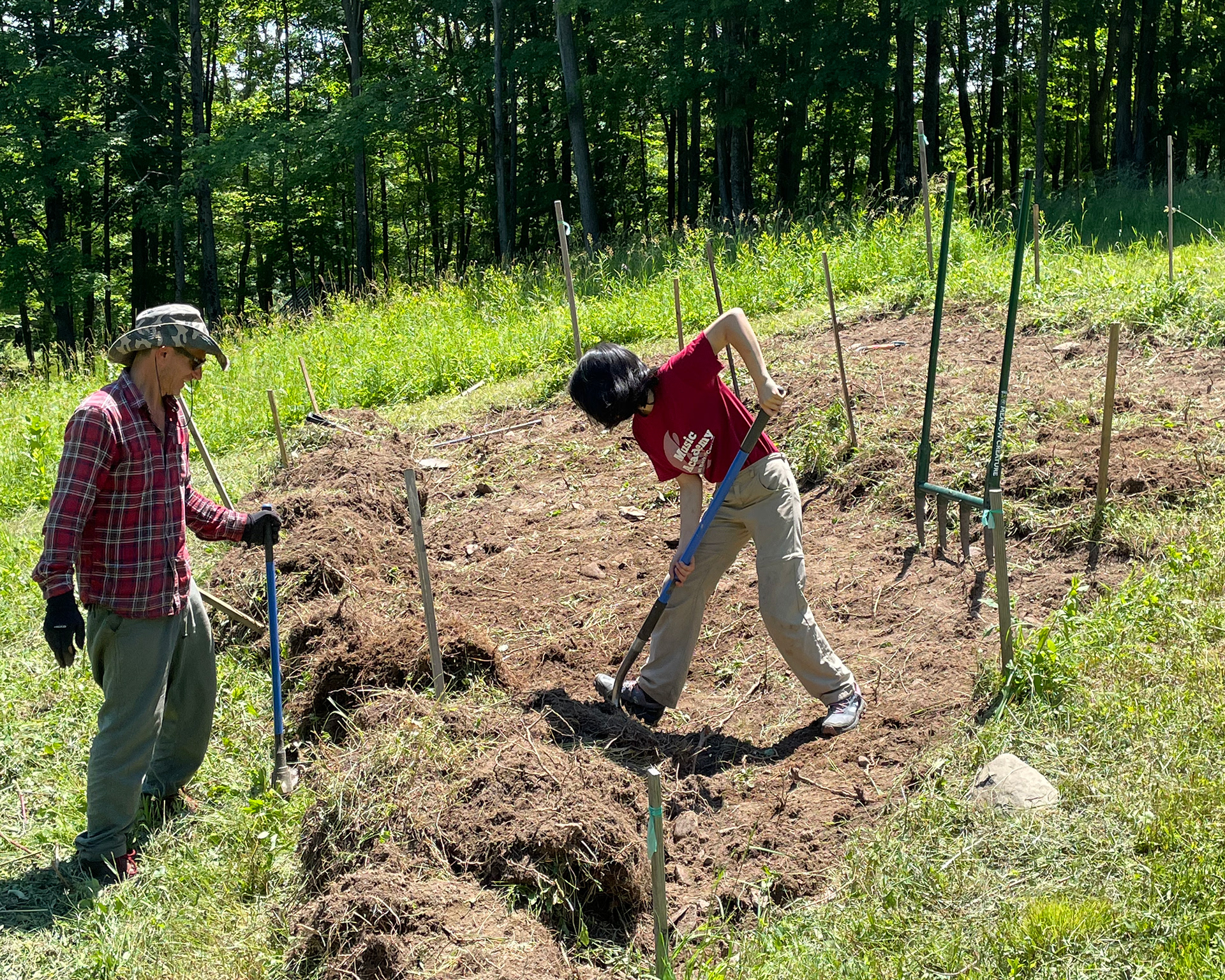FIELD STATION, KERHONKSON
A developing 6-acre campus of gardens, food forests, and appropriate technology structures.
A mission to learn and demonstrate how to live abundantly and regeneratively with nature.
A goal to build a community center where we can join in creative re-imagining of a world that is supportive and regenerative of life in all its forms.
A mission to learn and demonstrate how to live abundantly and regeneratively with nature.
A goal to build a community center where we can join in creative re-imagining of a world that is supportive and regenerative of life in all its forms.
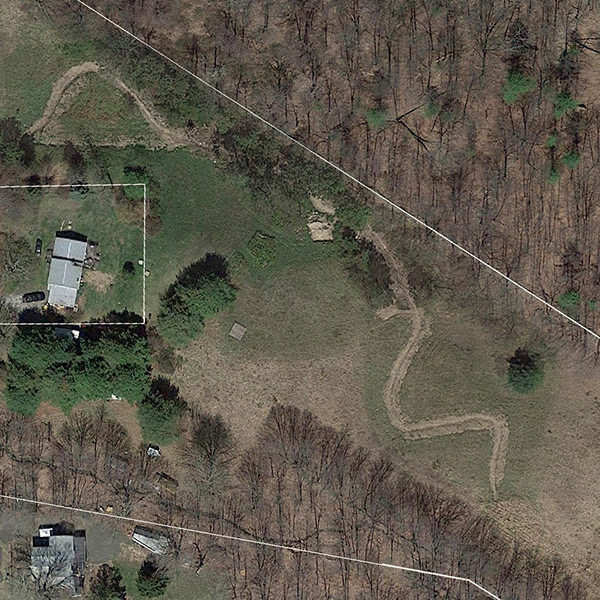
Aerial with swale
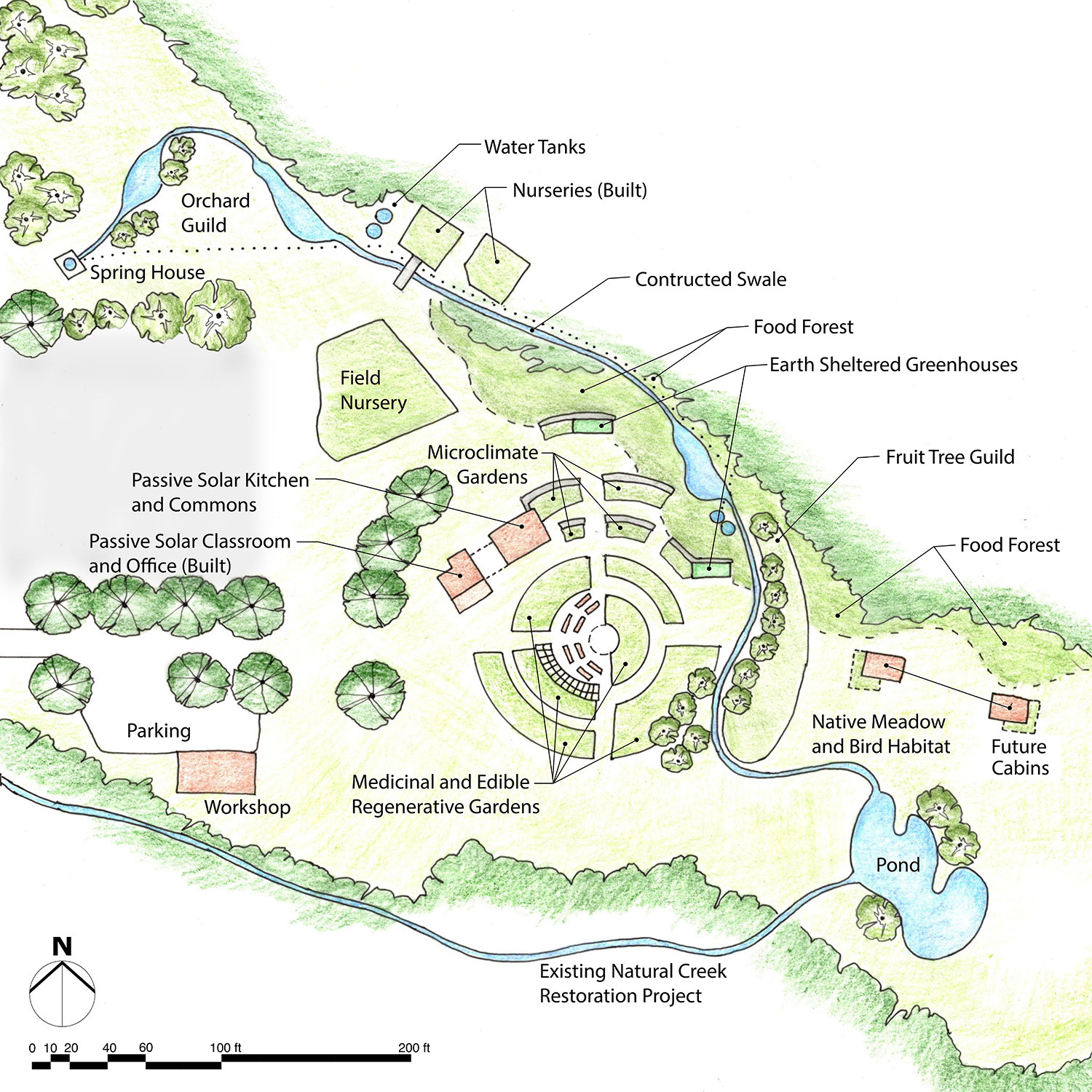
Field Station masterplan
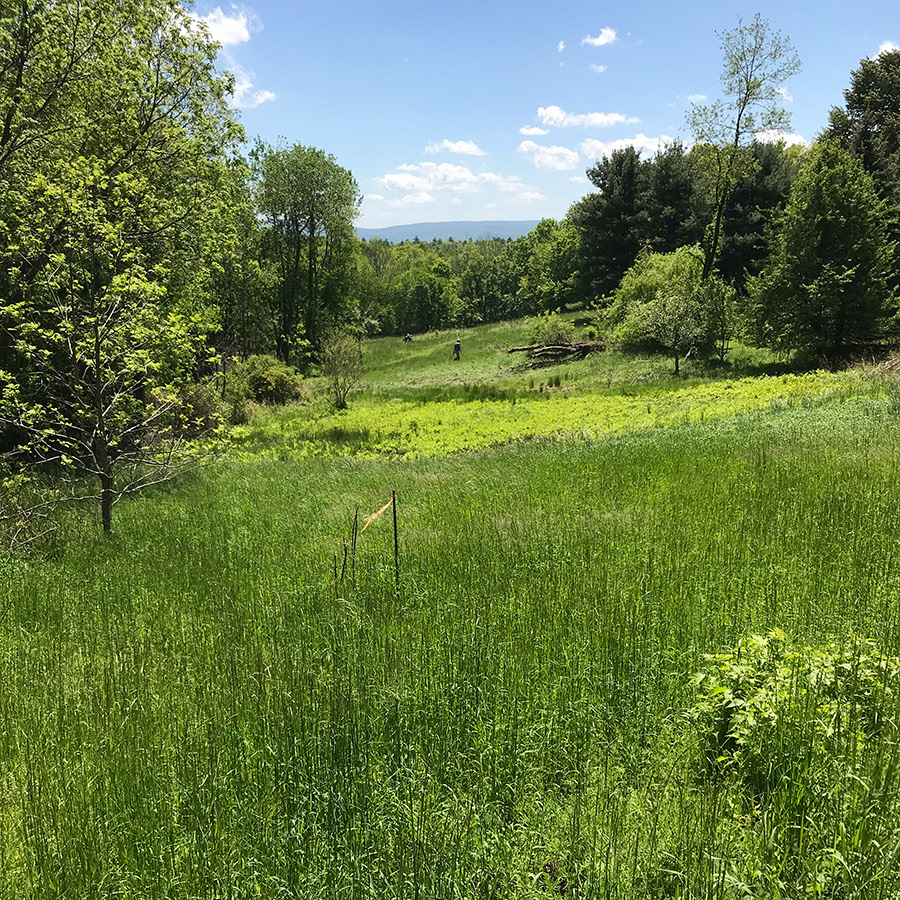
Meadow view
WATER SYSTEMS
Initial work at the Field Station involved carving an extensive swale to gather and slow the movement of water across the land. Collecting and retaining water greatly increases opportunities to support plants and reinforce a diversity of ecosystems. This masterplan illustrates the potential for nurseries, gardens, orchards, greenhouses, classrooms, and a network of ponds along the swale. Several of these projects are underway.
Water systems rely on gravity to move water from a spring to irrigation tanks and then into nurseries. A winding swale captures, slows and sinks rainwaters that are not absorbed. The swale offers wetter soils to support plants that like more moisture, while also allowing us to drain water from areas that we need to be drier.

Gravity fed irrigation tanks

Swale in dry season
FOOD FOREST, MEADOW AND MEDICINAL GARDENS
The developing food forest supports nut and fruit-bearing trees and shrubs such as walnut, hickory, pecan, and persimmon, paw-paw and blueberry. Planted in guilds alongside supportive understory species, the food forest becomes a diverse, multi-functional tapestry of plants for food, medicine and wildlife support. Meadows include native medicinals and are being actively managed to reduce invasives and support local insect, animal and bird populations.

Nursery-ing young, native plants
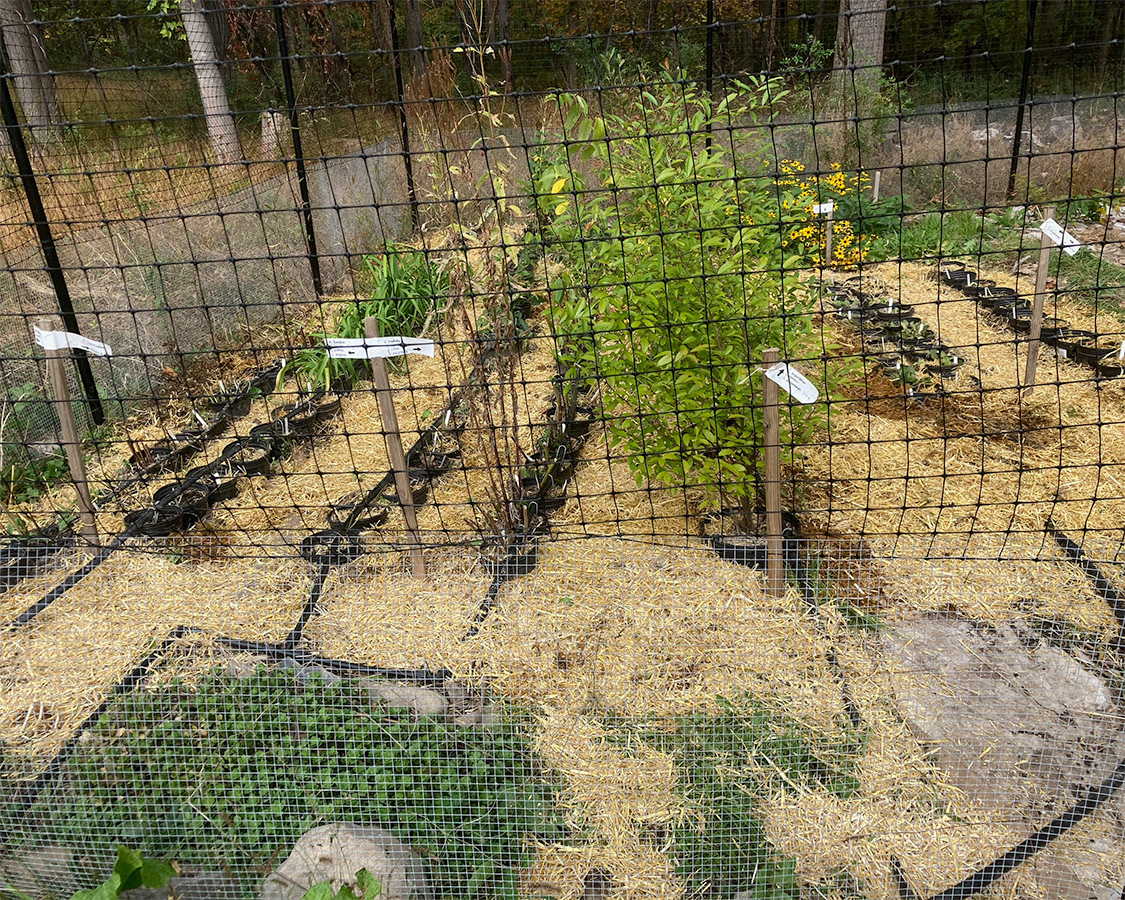
Overwintering smaller native plants in our nursery
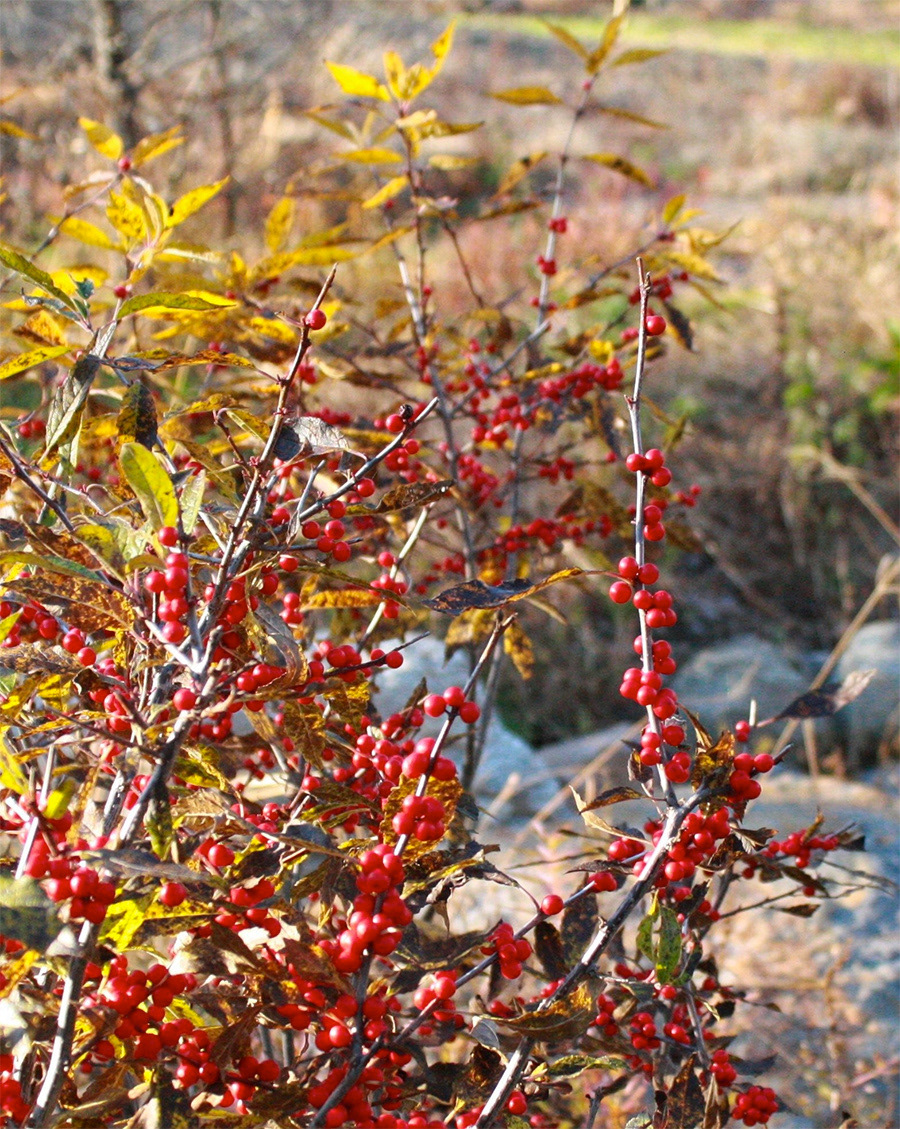
Ilex verticillata, winterberry, in a restored wetland area.
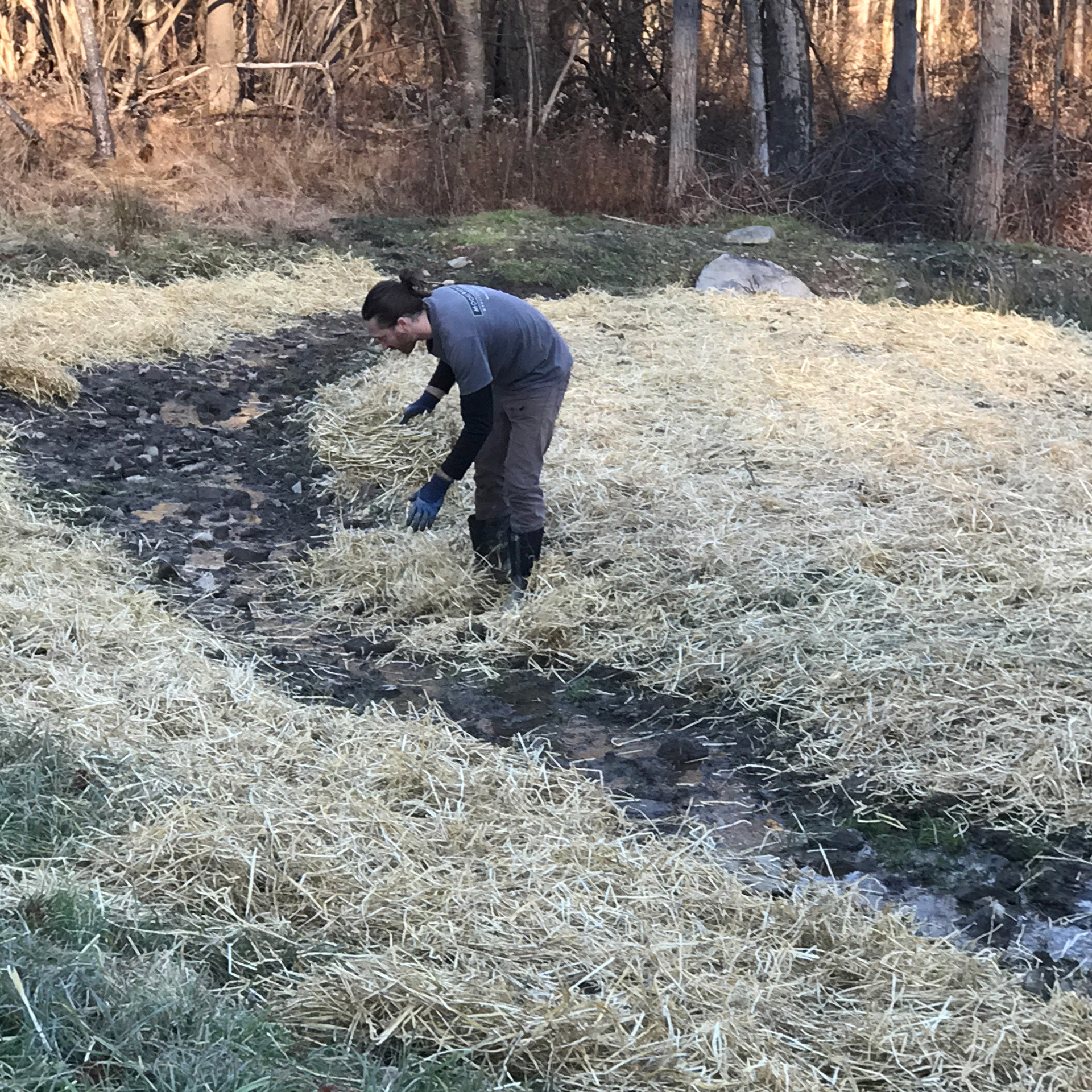
Introducing native wet meadow plants through seed mixes along the new swale.
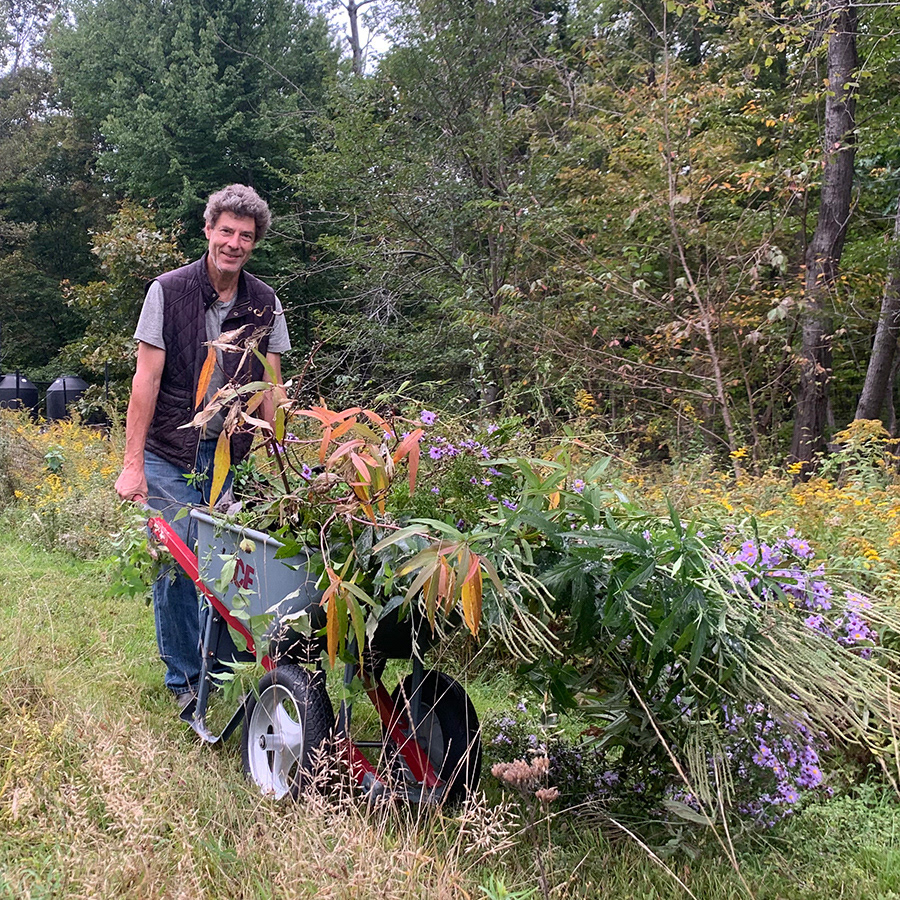
Fall planting
ECOLOGICAL RESTORATION and REGENERATIVE DESIGN
The field station offers us an opportunity to practice and observe our small scale restoration efforts and explore ways we can build more resilient landscapes that bring natural systems, people and buildings together in more supportive and regenerative ways. We are fortunate to have a variety of ecotypes and soils with a range of invasive and native plant populations.
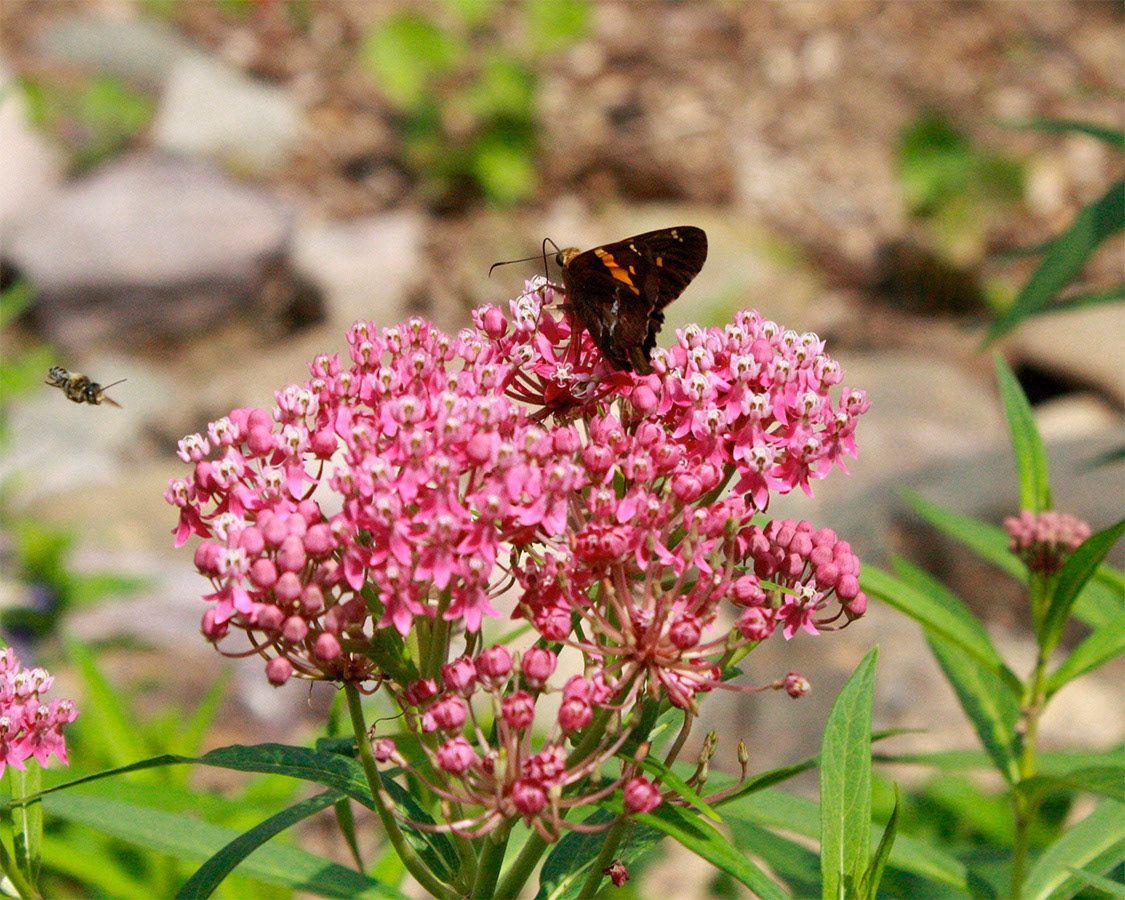
A silver-spotted skipper, Epargyreus clarus, visiting swamp milkweed, Asclepias incarnata.
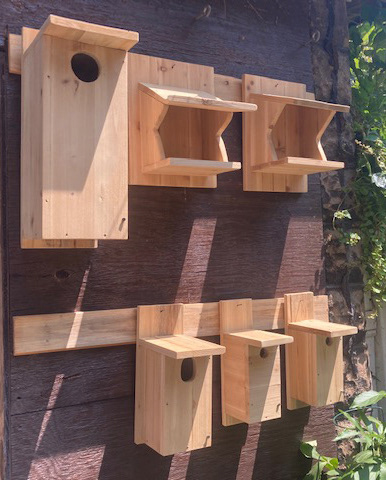
Birdhouse gallery
STRUCTURES
A passive solar classroom and office offer 4-season comfort with a thermal slab/battery and generous South facing windows. Solar electric panels provide enough power for lighting, hot water, refrigeration and computer charging. We are hoping to move forward soon with an earth-sheltered greenhouse and kitchen.
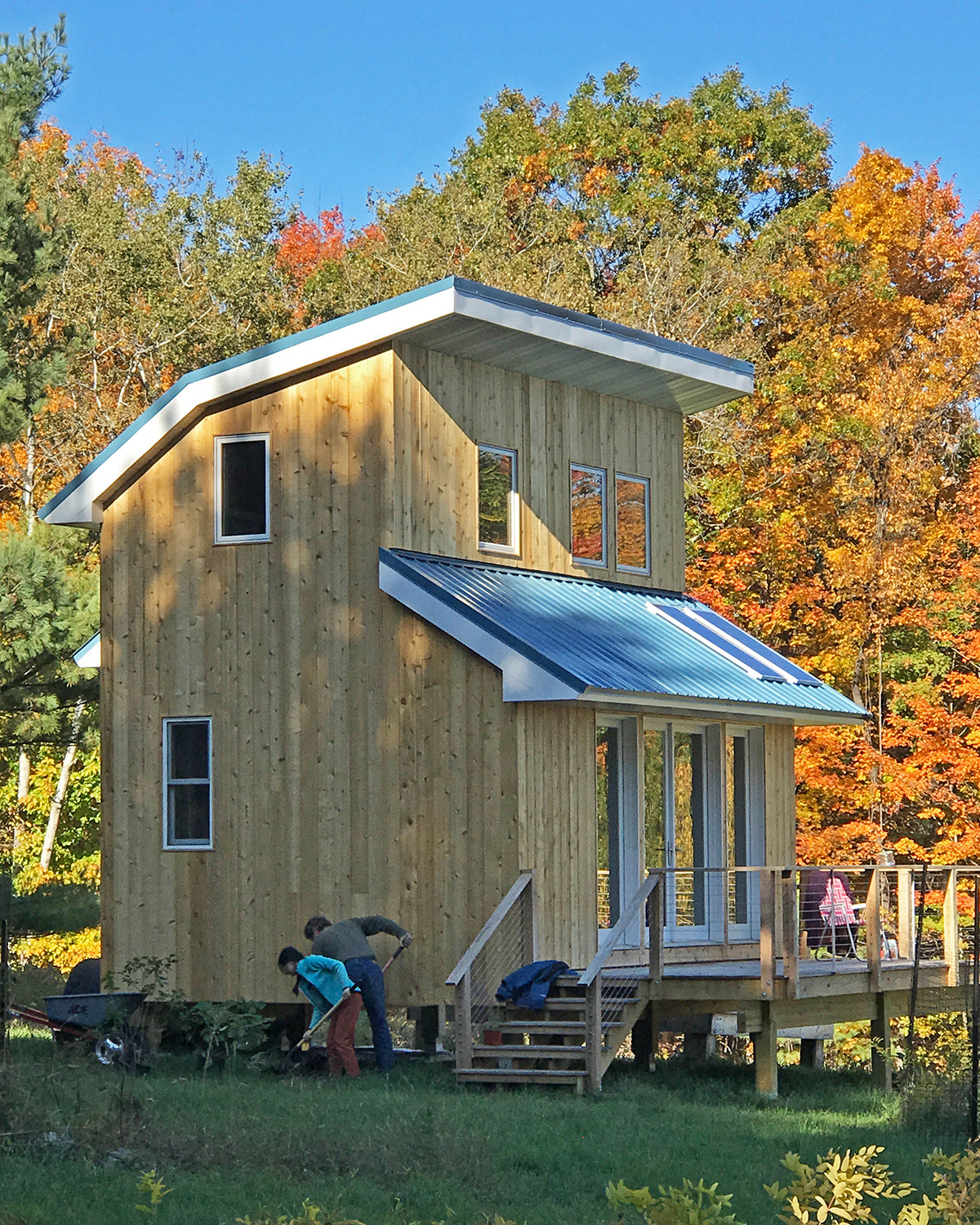
Passive solar classroom/office
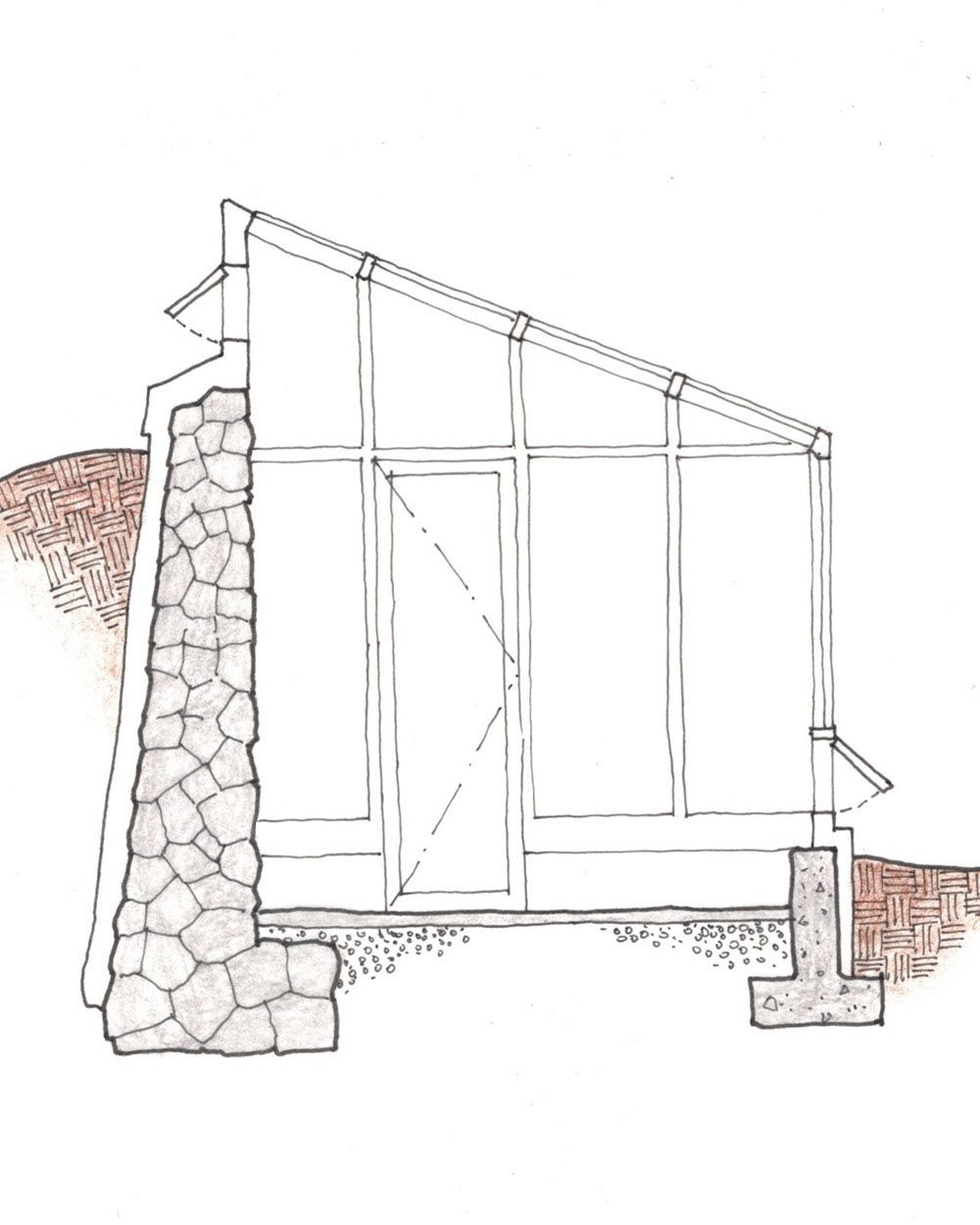
Future earth-sheltered greenhouse
5-SEASONS GARDEN
Nestled into a sloping old hayfield we have begun construction of a series of gardens that tell a story of seasonal health, plant medicine and plant food. As the seasons progress our wellness needs change and the gardens will be planted as guides that teach us about ourselves and the plants we need. The gardens will provide opportunities to study, sample, and make medicine from a variety of native and non-native plants.
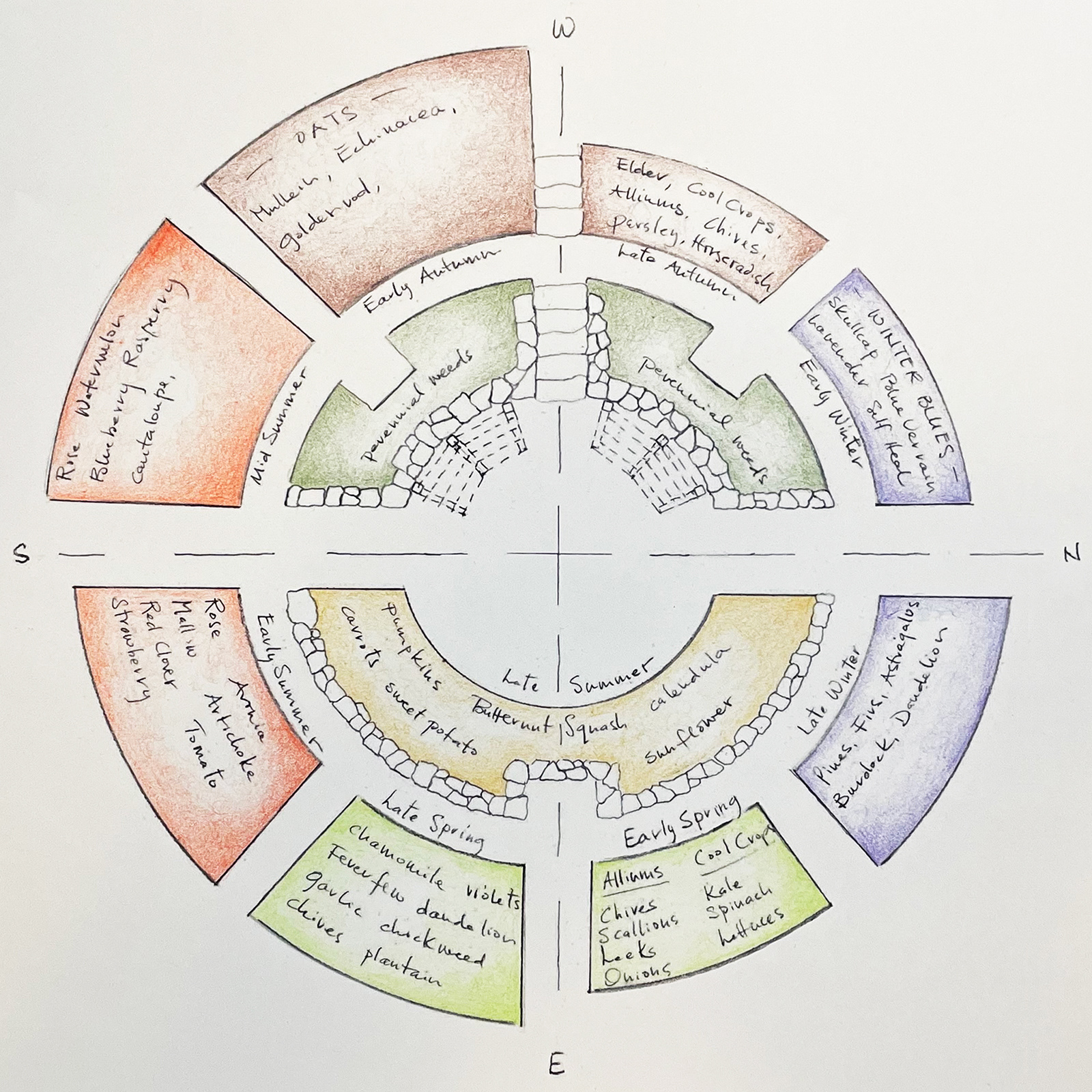
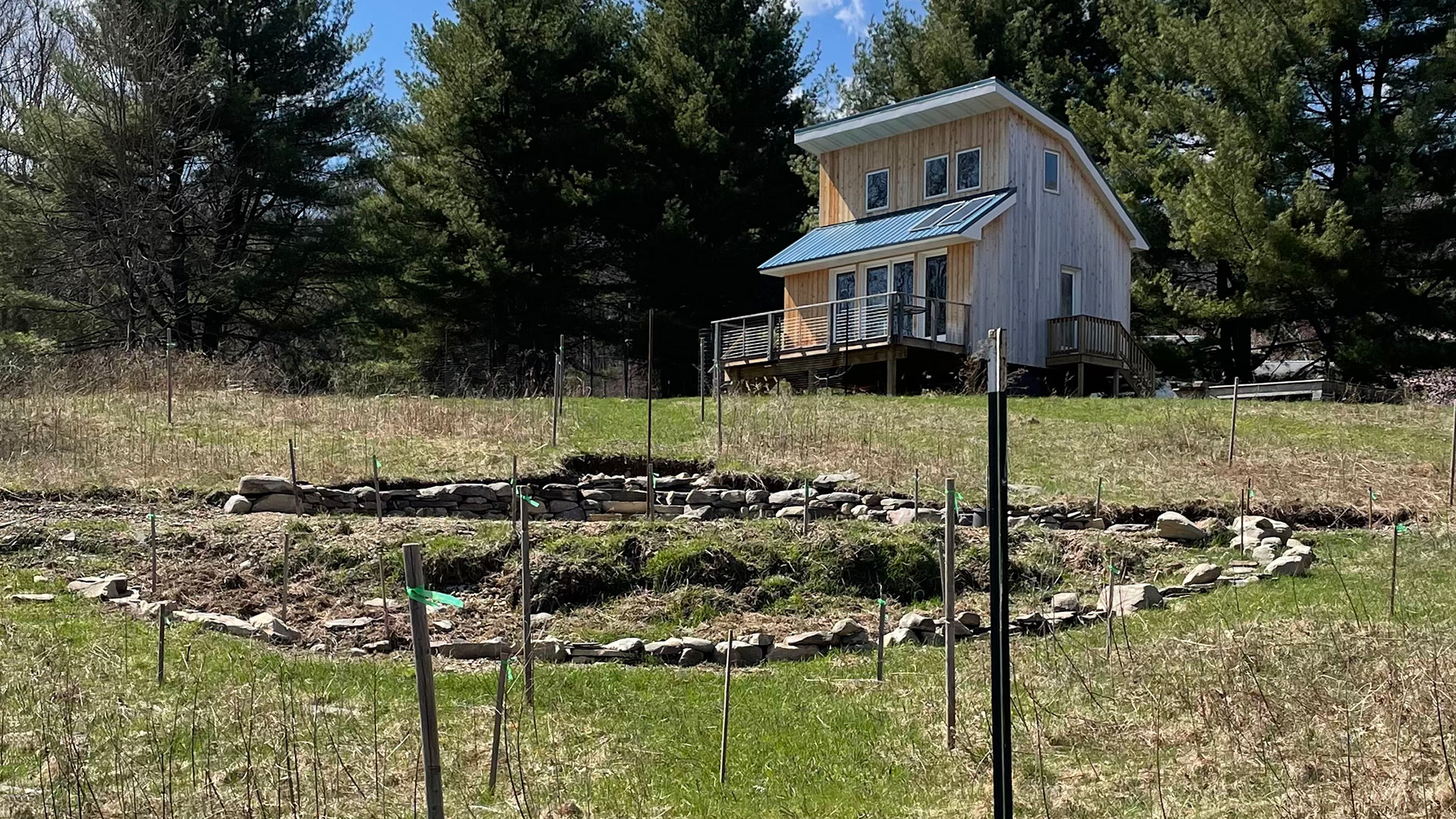
WORKING AND LEARNING
The Field Station gardens and planting areas continue to be developed with the help of many hands. We build out planting areas while also considering the educational programs and curricula that these gardens will support for many future visitors.
Future classes and workshops will be hands-on, bridging time-proven wisdom, permaculture practice and natural building traditions, with ecological science and modern building technologies. We hope students and visitors will help us shape these gardens, while learning from the plants and the land.
In addition to learning opportunities oriented around horticulture and gardens, the Field Station will host classes and workshops in related topics including green building, stonework, medicine making, foraging, and ecological restoration.
